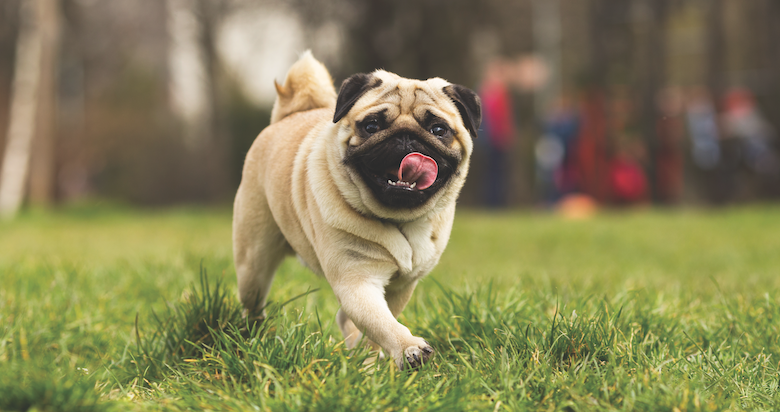By this point, we all have a passing familiarity with the history of the Pug. Pretty much anyone you ask can rehearse the general outline: Pug evolution started in the ancient Far East — China specifically — at some point in the 600s BCE, possibly much earlier. It gets a bit vague between that point and the Age of Exploration (roughly from 1500-1700), when merchants and travelers brought them to the Netherlands. From there, Pugs spread across the European continent, and eventually around the world. Throughout the 1700s, though, Pugs start popping up all over the place, especially in European portraiture.
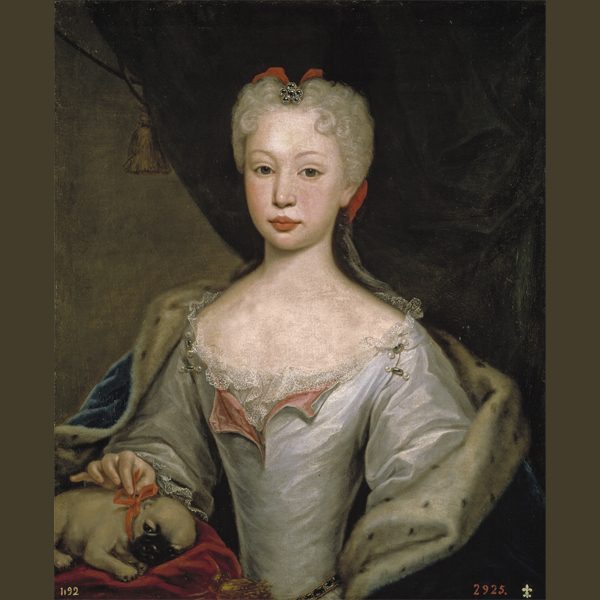
Art history has much to tell us about Pug history, especially regarding their physical appearances and rising popularity across Europe in the century before the first breed standard was codified. By the mid-1700s, Pugs were firmly established in Europe, and could be found from one end of the continent to the other. These portraits also reaffirm the Pug’s historical place as a domestic pet and companion, and help us dismiss one of the weirder, lingering myths about the breed’s origins.
Pug history is linked to art history
While it’s true that modern breed standards have radically changed the physical traits of many dog breeds. In many of these paintings, we can see Pugs once had longer muzzles, legs, and tails. We can also see that they’ve never been large or intimidating dogs. One persistent legend about Pugs is that in ancient China, they were originally bred to hunt lions. The only basis in fact here has to do with the Western tendency to give cute names to unfamiliar things.
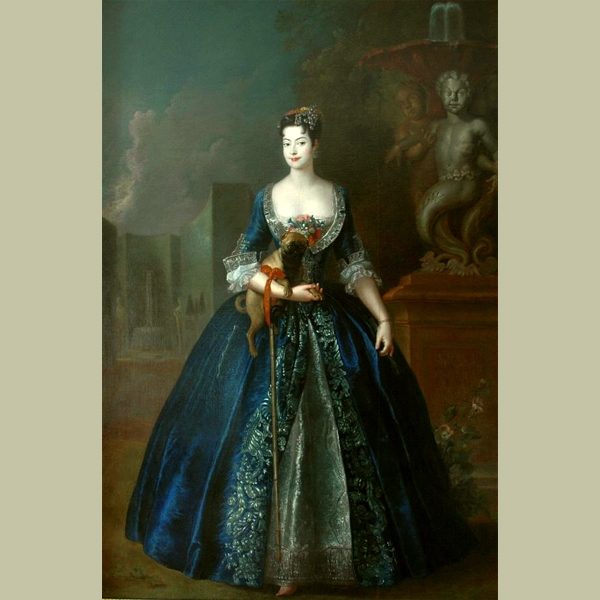
Illustrating that Pug history has always been tied to art history, the myth of the Pug as lion-hunter is grounded in traditional Chinese statuary. As far as Pugs go, the first points of reference for Europeans were guardian lion statues in the few Chinese cities where they were permitted to do business. These travelers referred to the statues as “Foo Dogs” or “Lion Dogs.” By process of association, these same travelers also began referring to a group of Eastern dog breeds, who resembled these statues, as “Foo Dogs.” These include:
As you can see, this is an extremely diverse bunch of canines. The nickname, easier to say and remember, has led to the ludicrous notion that Pugs were somehow originally intended, as a breed, to take down lions, creatures many times their size. Since lions are not even native to China, the idea is even easier to dismiss outright. Further, Pugs were being depicted in Chinese art several centuries before the first lion statue, around the same time that Buddhist traditions reached the country.
What art history tells us about Pug history
European art in the 1700s shows us how much physical variety there was among dogs who bore the Pug name. As you can tell from this self-portrait from 1745 by William Hogarth with his Pug, “Trump,” there was no consistent or fixed image of the breed as a short-legged, brachycephalic canine. According to the Tate, where the portrait can be found, Hogarth owned a number of Pugs during his lifetime. Did all of Hogarth’s dogs look so un-Pug-ly?
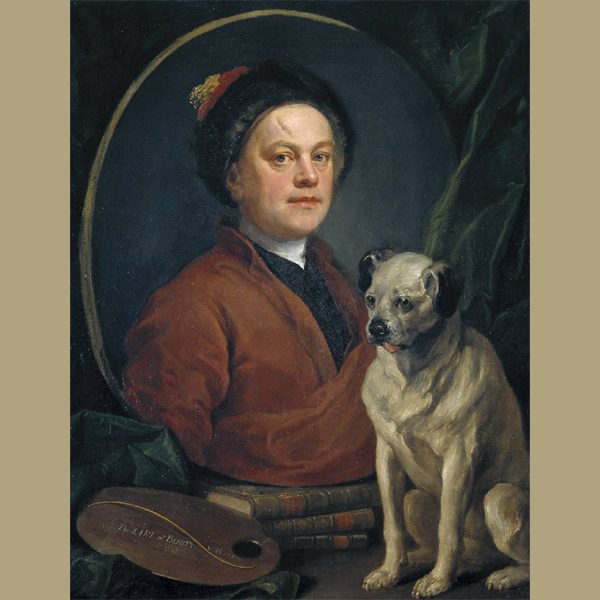
The way we talk about “the Pug” today assumes that there is one monolithic, Platonic ideal that all Pugs conform to. We know that in the quest for purebred dogs that has consumed dog breeders from the 19th century up to the present, much of the variety of physical traits in all breeds has been dramatically curtailed. Pugs are no different. The first Pug breed standard wasn’t formalized, accepted, and widely implemented in British breeding practices until 1885.
What is a Pug?
In other words, there was no universal answer to the question, “What is a Pug?” or “What makes a Pug a Pug?” before the end of the 19th century! Prior to that, there were many different types of dogs who were called Pugs, and very little consistency between them. A survey of 18th-century European portraiture illustrates the wide variety of physical characteristics in the breed during the Age of Enlightenment.
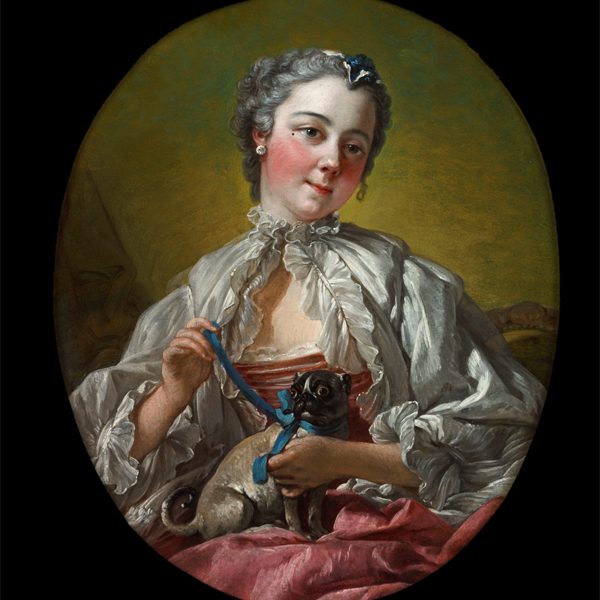
Similar to the way evolutionary scientists hypothesize that Neanderthals, an older, atavistic hominid, coexisted along humans with more modern characteristics, 18th-century art shows that, from one end of the 1700s to the other, many different kinds of Pugs coexisted. From long-legged dogs with pronounced muzzles to dogs that more closely resemble our modern Pugs, it’s extraordinary to see the sheer physical variety and range of dogs that bore the Pug name.
18th-century Pug pictures!
This survey is peppered with seven paintings of Pugs, created between 1725 and 1786, whose subjects lived in all over Europe. Note the year in each painting’s caption, and how different two Pugs can look even when they were painted in the same year! Even when we grant artistic license for style, it’s clear that you were likely to find a Pug in every European country during the 18th century, and that no two Pugs looked the same.
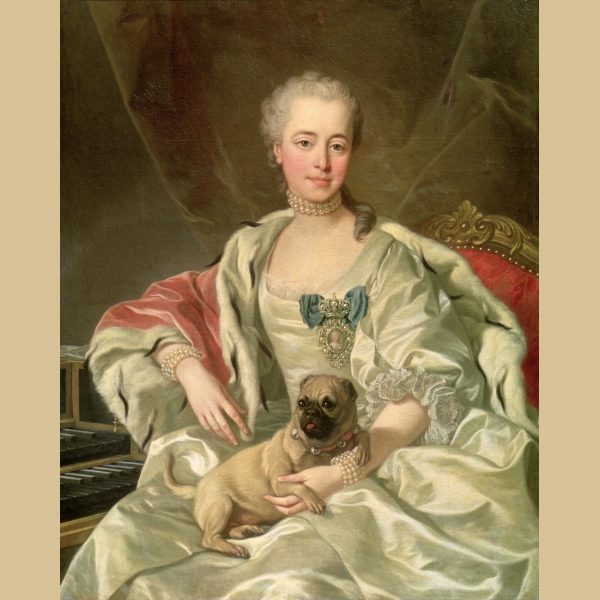
Certainly, you see Pugs that look very much like the ones you own today, or see at the dog park, but the differences between them is often startling! Where the rump is visible, it’s worth observing that none of these Pugs has the short, tight, corkscrew tail we associate with our modern Pugs. There are also distinct variations in eye size and leg length. Aside from still being relatively new to Europe, how can we account for the popularity of Pugs in portraiture during the 1700s?
Pugs and the vogue for Eastern art
Chinoiserie, or an appreciation for Chinese-influenced design, was a major aesthetic trend, particularly in the middle of the 18th century. From architecture and visual arts to home furnishings, collectors were interested in anything and everything that was inspired by China and the Far East. Increased trade between the English East India Company and China during the century meant that art and artifacts were available, but costly. This led Western artists to incorporate Eastern styles in their own works.
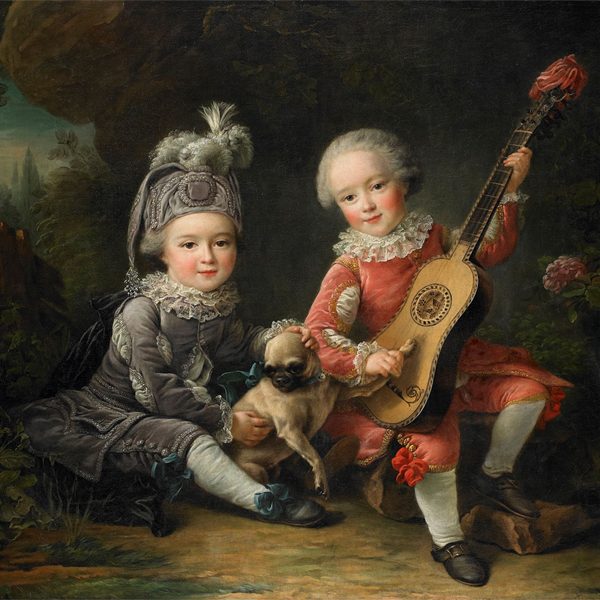
While Pugs began making their way into Europe during the later 1500s by way of Dutch merchants, by the 1700s, Portuguese, Spanish, and English ships were also carrying Pugs as cargo. Unsurprisingly, Pugs also begin appearing with greater frequency in portraiture. The growing popularity of the Pug during the 1700s is due in part to the dog’s size, portability, and temperament, but also to its relative scarcity compared to native breeds. However, we can’t discount the aesthetic vogue for all things Chinese as a contributing factor.
Pugs in art, Pugs as art
It’s no secret that trends in fashion and popular culture influence people’s decisions to adopt certain breeds of dogs over others. We might cite the spike in Chihuahua adoptions in the 1990s when Gidget starred in a series of Taco Bell commercials, or, in this decade, the rise in adoption of Northern wolf-like breeds with the global popularity of Game of Thrones. The point here is that people have always wanted their lives to imitate the art they enjoy.
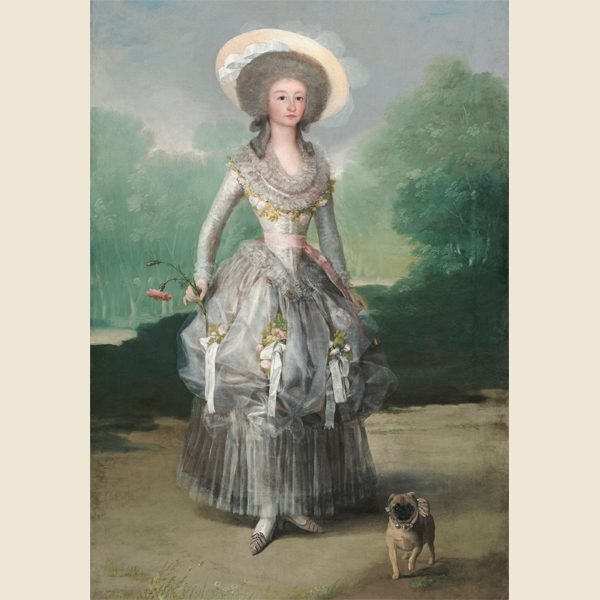
The explosion of Pug art in the 18th century makes sense when we consider that bespoke portraiture, much like today’s pedigreed dogs, came at a high cost. For influential Europeans, owning a Pug was participating in a kind of canine chinoiserie. Alongside porcelain goods, stylized bedroom furnishings, and other kinds of visual art from or inspired by China, Pugs were like living art.
What is art for but to be displayed? Although these 18th-century paintings reveal that there was a wide variety of physical characteristics and traits between Pugs from one end of the century to the other, they also show that the Pug was the Chihuahua or Northern Inuit Dog of its time. From static things to living ones, for wealthy and noble Europeans, to have Pugs and portraits painted with them was a declaration of status and fashion. Pugs have always been companion dogs, but it’s not unreasonable to think that in the 1700s, Pugs were bred for art!
Featured Image Credit: Getty Images

